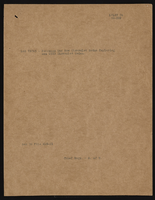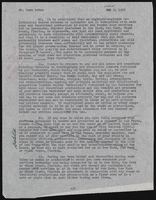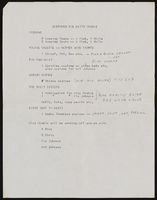Search the Special Collections and Archives Portal
Search Results
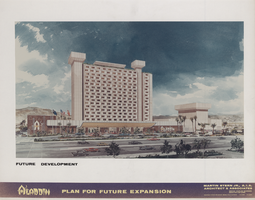
Proposal for the Aladdin expansion (Las Vegas), circa 1976
Date
Archival Collection
Description
Bound proposal for an Aladdin expansion including artist's conceptions, site map, and drawings of main architectural elements. This project was not built. Folder on last page marked "additional criteria" is empty.
Site Name: Aladdin Hotel
Address: 3667 Las Vegas Boulevard South, Las Vegas, NV
Image
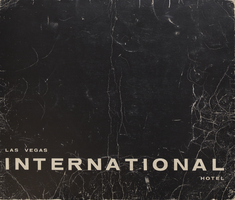
Proposal for the International Hotel (Las Vegas), circa 1968
Date
Archival Collection
Description
Bound proposal for the Las Vegas International Hotel including artists' conceptions, vicinity map, themes, and architectural drawings for all major components. The International Hotel was sold in 1970 and renamed the Las Vegas Hilton in 1971.
Site Name: International Hotel
Address: 3000 Paradise Road
Image
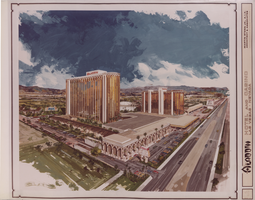
Proposal for the Aladdin high rise addition (Las Vegas), circa 1974
Date
Archival Collection
Description
Bound proposal for the Aladdin high rise addition including artist's conceptions, vicinity map, themes, and architectural drawings for all major components.
Site Name: Aladdin Hotel
Address: 3667 Las Vegas Boulevard South, Las Vegas, NV
Image

Proposal for the Flamingo plan for future expansion (Las Vegas), before 1975
Date
Archival Collection
Description
Bound proposal for a Flamingo high rise addition including artist's conceptions, vicinity map, themes, and architectural drawings for all major components. The project was never built. Folder on last page marked "additional criteria" is empty.
Site Name: Flamingo Hotel and Casino
Address: 3555 Las Vegas Boulevard South
Image
McGinley, Ann C.
Ann McGinley grew up in Allentown, Pennsylvania, the third child in a family of four. Her mother was a homemaker and her father was a lawyer. McGinley attended college and majored in Spanish. She earned a master’s degree and taught in Spain for five years. Her brother and his wife were lawyers and she decided to go back to law school at the University of Pennsylvania. McGinley did a two year clerkship for a federal judge, doing research and drafting opinions. She met her husband-to-be during this time and they moved to Minneapolis, Minnesota.
Person


